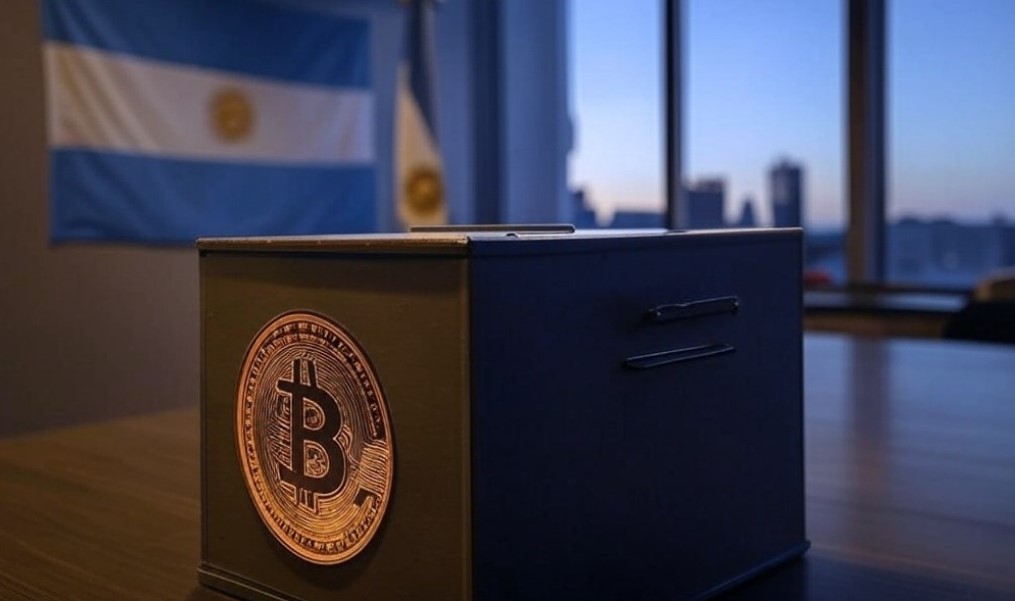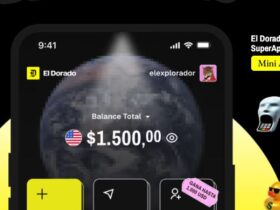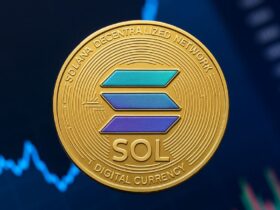You can mine ALPH alone or through a mining pool.
The Alephium network processes almost 5,400 blocks per day and the current reward is $0.6.
Currently, the ALPH cryptocurrency, token native to the Alephium first layer (L1) network, it is an alternative to Bitcoin mining, as shown by the profitability of its mining equipment. This becomes important considering that Bitcoin (BTC) mining did not have the best 2024.
Recently, CriptoNoticias reported that some of these ASICs (application-specific integrated circuits) from Alephium were more profitable than those from BTC. Currently, an Alephium miner can make a profit net of between 25 and 28 dollars a day.
Additionally, the Alephium network is characterized by consuming “1/8 of the energy compared to Bitcoin”, which means that you can operate with lower electrical demand and fewer operating expenses.
Simply put, ALPH mining is not only more financially accessible than Bitcoin, but it produces higher returns. In this article, you can learn what you need to become an Alephium miner, but not before learning a little about the tokenomics of this coin.
You can also go directly to the guide to being an Alephium miner using the following table of contents:
Table of contents
Alephium Tokenomics and Mining
Before you decide to mine ALPH, it is important that you know its tokenomics.
He supply Circulation of this cryptocurrency exceeded 90 million ALPH. The entire supply of this cryptocurrency will reach 1 billion ALPH, for 21 million BTC.

86% of the remaining supply will be extracted by mining in the next 80 years. Each block produces 0.46645486 ALPH as a reward, according to information from F2Pool.
Alephium has a fixed supply, so the price of this cryptocurrency is subject to predictable inflation or deflation, like bitcoin. However, compared to her, This supply is much larger, and the block rewards smaller.
Alephium provides a current reward of 0.5 ALPH (approximately $0.6 at the time of this writing).
Blocks are processed every 16 seconds on the Alephium network and contain between 1 and 2 transactions, depending on your data on-chain. That is to say that in Alephium they process an average of 5,400 blocks per day (Alephium’s official site states that this figure amounts to almost 90,000 blocks per day, which does not seem to be accurate according to the block explorer).
This means that you will compete with the rest of the ALPH miners approximately every 16 seconds to find the next block and obtain the reward.
To establish a comparison, for example, the Bitcoin network processes an average of 144 blocks per day, one every 10 minutes approximately. These usually contain from 1,000 to 4,000 transactions in each block.
In other words, although the BTC subsidy fixed rate reward currently exceeds $250,000 and ALPH’s is much lower, it is also true that on the Alephium network, the chances of finding blocks They are higher.
How to be an ALPH solo miner
Solo mining means that your mining team will work independently to find blocks and receive rewards from the network.
To carry out this practice from your home and on your own it will be necessary that you constantly maintain your equipment. hardwarelike a ASIC, connected to a power source and internet. In addition, you will need to take care of its maintenance and cooling.
The three ASICs that currently will offer you a higher profitability than the most profitable BTC equipment are: Bitmain Antminer AL1 PRO, Bitmain Antminer AL1 and Iceriver AL3.
It is not recommended to mine Alephium with GPUs (graphics processing units). This option will not offer you good performance, since today GPU mining registers losses of 0.12 dollars a day and more as well, according to the site Whattomine.
To mine solo, you will need configure a wallet dedicated for ALPH mining. If you want, you could download the wallet official from Alephium, in its versions for Windows, macOS and Linux desktops. In addition, you could use other wallets as SafePala hardware wallet; MetaMask, Trust Wallet or Ledger will also work for you, among others.
Once you have these first requirements, you have to run a full Alephium node. To perform this step, you have to download the customer of the network. This node will keep the Alephium network directly connected to your hardware (ASIC) and, through it, you can validate and record transactions.
So you can connect your ASIC to the node, you must enable RPC functions (Remote Procedure Call) in the node configuration file inside the client you downloaded. At this point, the node system will require you to create a username and password. Do it and save that information.
To complete this procedure, you have to configure the IP of the ASIC with the node URL for them to connect.
Through an internet browser, enter the device’s IP ASIC to access its configuration interface. In the ASIC configuration or connection section, enter the IP of the node that you downloaded previously. To complete this step, you will need to have on hand the username and password that you previously created when configuring RPC.
Once this is done, save the changes in the configuration section of the ASIC and you will have already configured your team with the Alephium node.
Verify that the node was synchronized correctly
After having connected the ASIC with the Alephium network node, it is important that you make sure your node is fully synchronized with the network. To confirm that it is, you could consult the explorer of Alephium blocks to see the last confirmed block on the network and compare it with the current block on your node. If that last block number matches, then your node is correctly synchronized.
Only after the node is synchronized will you be able to start the mining process. This ensures that you are working directly with the network and contributing to the security and stability of Alephium, which is essential to receive mining rewards.
While you will not need to actively intervene in the mining process while your ASIC is working, you do have to monitor and maintain the proper functioning of your equipment.
For example, you have to verify that the ASIC is producing the rate of hash expected, that it is mining constantly and make sure that the equipment is not overheating.
By following the previous steps, you will be able to mine solo on the Alephium network. The main advantage of mining alone is that, for each block you manage to process successfully, the reward will go entirely to you wallet linked personnel.
The Alephium network processes an average of 5,400 blocks per day, compared to the 144 daily blocks of the Bitcoin network. Mining ALPH therefore grants a higher probability to obtain the block subsidy, although on the other hand these rewards are significantly less than those given for bitcoin: 3,125 BTC or $250,000 at the time of writing.
By mining solo, you have to know that you will be competing against miners who may have greater processing power (hashrate) and pools of mining. In turn, the expenses involved in this task (electricity, maintenance of hardware) will be at your expense. According to Whattominethe operating cost of the three ASICs The most profitable is around 9 dollars a day, but it all depends on the area where you live, its energy costs, etc.
How to mine Alephium from a mining pool
Unlike solo practice, mining Alephium through a pool will allow you to combine your processing power with other miners. To solve blocks and receive rewards in proportion to each one’s contribution.
Ideally, it would be recommended that you have an internet connection of at least 10 Mbps (megabits per second) and an adequate power supply. This will allow you to carry out this practice more effectively.
For example, you could implement an uninterruptible power supply (UPS). The UPS not only keeps your devices connected (such as the modem, router and the ASIC) assets during short power outagesbut also regulates any variations in voltage that could disrupt the connection.
In addition to those first two requirements, you must also have a wallet dedicated, as mentioned before.
You will first have to register for a pool let it be compatible with this cryptocurrency, such as WoolyPooly, HeroMiners, DXPool, Pool Kryptex or F2Pool, among others. You have to know that the pools mining they charge a commission which fluctuates from 0.9% to 2% for their services, which reduces profits.
To operate in a poolafter you have chosen one, you will need to link the address of the wallet in which you want the rewards to be deposited with the URL of the pool.
For example, in the following image extracted from the interface of the pool Kryptexin the “enter your mining address” section you must enter the address of your walletwhere you will receive your rewards.

You will also need a hardwareas GPUs either ASICs. If you choose the first option, you will have to download a software that allows you to configure your GPU with the poolfor example lolMiner or the GPU-miner from Alephium. Open the configuration file software mining and configure it with the address of the pool and your address wallet.
Otherwise, if you decide to bet on a more powerful machine that offers you greater rewards (and expenses), you can choose connect your own ASIC to the address of the pool that you have chosen.
This procedure is very similar to the one explained in the solo mining section, except that instead of configuring with the IP of the node that you downloaded, you must enter in that same section the IP that the mining pool will give you so that you can connect to the Alephium network and start mining.
Advantages and disadvantages of mining Alephium in a pool
One of the main benefits you will find in mining ALPH through a pool the thing is you won’t need to run your own node from the Alephium network. The operator of the pool is responsible for running the node and coordinating communication with the network, so you will use the infrastructure of the pool.
This, in short, means that you should not spend money in electrical consumption, in maintenance or in the operation of a node. It is worth clarifying that you will have to take charge of the electrical consumption of your mining equipment if it is connected to the pool working.
Additionally, mining through a pool allows you to earn rewards more regularly than solo mining, as the combined processing power increases the frequency of solved blocks.
This means that you will access more stable incomealthough you should know that the greater the contribution, the greater your rewards will be.
In contrast, you also have to consider that by depending on the operator of the poolyou will have less control over decisions important aspects of the mining process, such as which transactions to include in the blocks.
Ultimately, if the pool suffer server crashes or technical problems, the user’s mining ability is affected. This can lead to disruptions in reward generation and affects income stability.






Leave a Reply